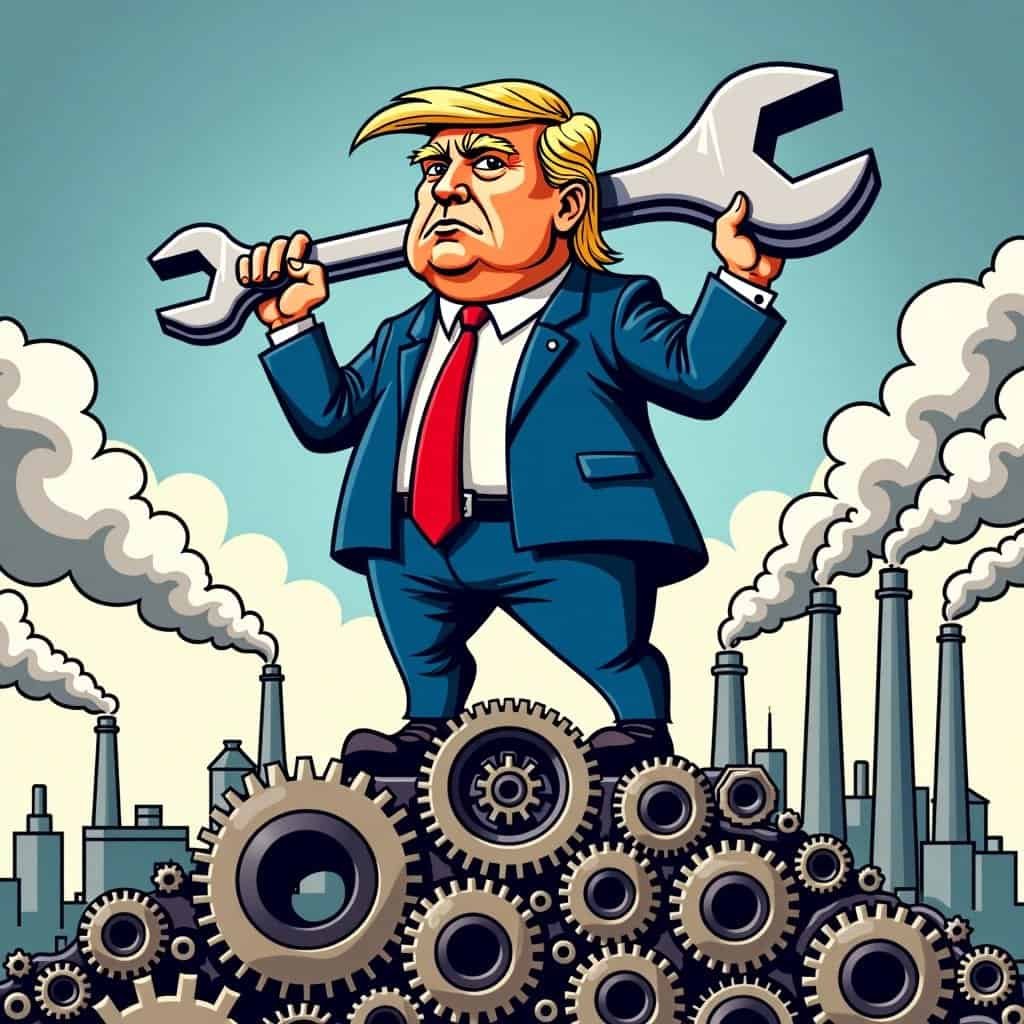On a sun-kissed Tuesday in Savannah, Georgia, former President Trump unveiled his ambitious blueprint for reigniting American manufacturing prowess. Channeling his signature flair for visionary ideas, Trump proposed a “15% Made in America” corporate tax rate, destined to woo global businesses onto American soil. Picture this: factories bustling with activity, workers whistling to the tune of prosperity, and the sound of “Made in the USA” resonating worldwide! Trump’s vision is as American as apple pie, and it promises to bring back millions of jobs while giving wages a sweet boost.
The Trump plan isn’t just about cutting corporate taxes; it’s about forging an irresistible haven of low tax rates, cheap energy, and minimal red tape for businesses that set up shop domestically. What about those reluctant to heed the call? Substantial tariffs await them. This isn’t merely a policy; it’s a clarion call to manufacturers worldwide, beckoning them to the land of the free and the home of the brave.
Trump’s Vision for American Manufacturing
For every American worker worried about foreign job poachers, Trump’s got your back. Under his plan, other nations will be the ones biting their nails over job migrations, not us. The influx of businesses promises to swell American wealth without triggering a wave of inflation, an economic coup de monde if you will!
Key Points of Trump’s Manufacturing Plan
- ✅ 15% corporate tax rate for “Made in America” products
- ✅ Low tax rates and cheap energy for domestic businesses
- ✅ Substantial tariffs on non-compliant businesses
- ✅ Creation of special federal zones with near-zero taxes
- ✅ Appointment of a Manufacturing Ambassador
Currently, the corporate tax rate stands at 21%. Trump’s proposal to slash it to 15% certainly faces scrutiny over diminished tax revenue, a potential reduction between $460 billion to $673 billion over the next decade, depending on who you ask. But here’s the deal: less tax burden translates into more business and jobs. And with more Americans employed, tax revenues can tick upward too, reinvigorating government services. Right out of the conservative playbook, this strategy deftly balances economic growth with essential public services.
Contrasting Approaches: Trump vs. Harris
Standing in stark contrast is Vice President Kamala Harris’ push to hike the corporate tax rate to 28%, a sharp divergence from her earlier stance. Her rationale? To make billionaires and big corporations pony up while fattening working folks’ wallets. Analysts project that this tax hike could ring up $1 trillion to $1.2 trillion from 2026 to 2035. But more government interference could chill business enthusiasm, escalating costs and stifling job growth, a scenario Trump’s defending against with his tax-slashing proposition.
Trump’s Approach
- 15% corporate tax rate
- Focus on domestic manufacturing
- Reduced regulations
Harris’ Approach
- 28% corporate tax rate
- Increased taxes on corporations
- Focus on worker benefits
Yet again, Trump thrilled his audience by toasting Harris as the “tax queen”—for her taxing ambitions—which he argues would send businesses scampering across the border. Now, sprinkle in a dash of good old American hospitality: Trump promises special federal zones with a near-zero tax load and regulations just for U.S. producers, potentially resurrecting entire industries from foreign lands. Plus, a dedicated Manufacturing Ambassador armed with charm and special envoy skills would work round-the-clock to reel in global players, making America their next production hub.
Economic Impact and Historical Context
This speech isn’t merely an economic roadmap but a testament to the quintessentially American pursuit of innovation and work ethic. Economic strategies that bank on entrepreneurial prowess have historically lifted countless Americans off food stamps and swelled household incomes. Trump’s track record speaks volumes: inward investment in American infrastructure, renegotiated trade deals, and a fervent support for homegrown industries remain his hallmarks. So, in a world increasingly reliant on global supply chains, Mr. Trump’s plan pledges to put Americans back to work by producing goods right here, in the U.S. of A.
If conservatives like Trump know one thing about economics, it’s this: unleashing the potential of lower taxes fuels investment and enriches everyone. By breaking the shackles of high taxes and big government programs, Trump’s strategy bares teeth against economic stagnation while his adversaries cling to higher taxes and unfunded spending.
Conclusion: A New Industrial Revolution?
All said and done, Trump’s vision isn’t just a plan—it’s a promise of hope, opportunity, and good old-fashioned American resolve. Let’s tune in and watch how this economic script unfolds. Could Trump’s “Made in America” dream rebuild our manufacturing backbone? It could indeed be the dawn of a new industrial revolution.
Table of Contents
- Trump’s Vision for American Manufacturing
- Contrasting Approaches: Trump vs. Harris
- Economic Impact and Historical Context
- Conclusion: A New Industrial Revolution?






